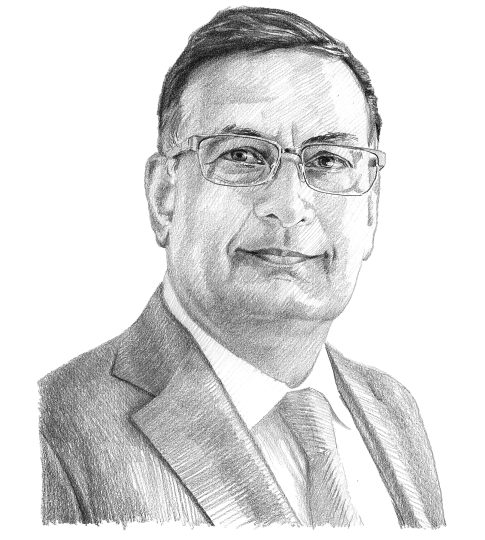Communist Party of China: Setting a 2029 deadline
Though seemingly insignificant at first blush, the Communist Party of China’s new priorities mark an important change.

In a nutshell
- The Party’s reforms will prioritize state control and high-tech innovation
- Stability remains the key focus, with no new economic policies announced
- The Party will likely take a pragmatic approach, but could increase control
A plenary session of the Central Committee of the Communist Party of China (CPC) is not usually an event that sets many hearts racing with excitement – at least not outside China or the CPC apparatus. But the Third Plenary of the 20th Central Committee of the CPC, held in Beijing from July 15-18, 2024, did produce a surprise in the form of a number, or more accurately a date – the year 2029.
It appears at the end of the ninth paragraph of the committee’s official communique on the results of the session: “The reform tasks laid out in this resolution shall be completed by the time the People’s Republic of China celebrates its 80th anniversary in 2029.”
Virtually no international or domestic observer foresaw the Committee setting a new date to complete “reforms.” And as usual with China, there is a lot of juicy content in what, at first glance, appears as dry detail. In fact, this date – the year 2029 – reflects a change in the Party’s priorities.
The Committee is the main decision body of the CPC and, consequently, the whole country. It usually meets in its plenary seven times over the five-year term of each Central Committee: twice in the year of and following a national party congress, and once in each of the next three years. Historically, the Third Plenary has been dedicated to economic issues – the opening up of China and the idea of a “socialist market economy,” for example, were adopted at a Third Plenary. Many observers were, therefore, eagerly awaiting this event, and its postponement by several months only increased their interest.
But when the meeting was finally held in mid-July 2024, they were to be disappointed: Not only did the Committee fail to introduce any new economic policy, but it also made clear that economic issues were not even its main focus – the Party and state were at the center of their attention. The economic policies adopted by this Plenary were simply carbon copies of existing ones.
The general picture given by the international press of the event is thus not wrong, but it misses many intricate details – ones that China-watchers pay attention to, as they can be revealing. This Plenary did not change the general framework of Chinese policies, but it did alter its priorities.
New deadline
The first change of priorities came with the mention of 2029. As noted, 2029 is the 80th anniversary of the founding of the People’s Republic of China. Until this Plenary, this date had been unremarkable and was not mentioned in any of the Party’s official communications or resolutions. That changed with the post-meeting announcement that it had decided to speed up “reforms” and finalize them by 2029.
The reforms repeatedly alluded to are actually the general framework of the policy pursued by the Party (any Party policy is considered a “reform” in Communist China). These policies are the ones Chinese leader Xi Jinping set out in 2013, which focused on transforming China from an investment economy to an innovative, consumption-driven economy, decreasing economic inequality and strengthening China’s independence from global markets.
Back then, the Party envisaged China being the world’s foremost superpower and economy by 2049 – the 100th anniversary of the People’s Republic. Bringing that deadline forward by 20 years could have several meanings, which are not mutually exclusive. First, 2029 is just after the end of the third term of Mr. Xi’s State Chairmanship, or presidency, of China. This indicates that by then, under his leadership, the Party intends to have finalized the revolution. It also indicates that President Xi, now 71, will seek a fourth term at China’s helm (the two-term limit on the presidency – one of the three posts held by China’s supreme leader – was abolished in 2018).
Second, it could represent full acknowledgment of China’s systemic competition with the United States as a global superpower, and its bid for global leadership in the short term. Third, it could signal domestically that the Party will speed up work on boosting the welfare and quality of life of all Chinese citizens. This is a response to the increased uneasiness of the Chinese population about the economy, inequality and the elusive promise of the “Chinese Dream” made by President Xi.
High tech, taxes, land
The second change of priorities directly affects the Party’s economic program. While many (Western) observers expected more stimuli for the economy and perhaps even further economic liberalization, the Plenary indicated the current strong grip of the state over the economy will continue and might even be strengthened. The Plenary also switched some of the top items in its reform agenda to high-tech innovation, taxation and agricultural land.
High-tech innovation is a sector steered by the state and dominated by state-owned enterprises. It is principally a political entrepreneurship envisaging the control of China’s population as well as nascent and emerging industries, both in China and abroad. The tax-code reform aims to redistribute wealth, and the agricultural land reform effectively renationalizes the country’s soil.
Facts & figures
President Xi characterized the reforms in a distinctly political or strategic manner, rather than in economic terms. For example, he said the main challenge in core technologies was their being controlled by “external forces.” Establishing a self-sustained Chinese ecosystem for high-tech innovation is now seen as an important area of work at the central, provincial and even local levels.
According to President Xi, the significant disparities in urban-rural development and income distribution are hindering high-quality economic and social growth. For this reason, the rural population needs access to more and better land and agricultural technologies, and undocumented migrants to the cities require the regularization of their status. These policies may indeed serve the people, but they also serve the Party, allowing it to nationalize land and exert stricter control over people in the cities.
Party-state and Party-everything
The Plenary also underscored the Party’s primacy, making it clear there must be no doubt that the Party leads the country and controls its economy and population. It emphasized that even if there are market elements in China, markets are merely tools for the Party’s policies, and not alternative systems.
However, Western observers are quick to point out that China is paying a price for the Party’s grip on the economy. The Middle Kingdom’s economy is less robust than it was in the past; it still faces massive over-capacity and is lagging in innovation and consumption. However, from the Party’s point of view, these indicators are secondary at most – much more important to the CPC is to maintain its top position in a system where all components – the state, the army and the people – are subservient to the Party.
The Plenary also declared that China has come through the last decade without suffering from an economic crisis and that it has improved the quality of life of the people. From the Party’s point of view, even the draconian measures taken during the pandemic were both justified and successful.
The Committee sees three main tasks that must be achieved for the successful advancement of the country: First, there are domestic imbalances that need correction; second, there is international pressure on China that must be relieved; and third, China needs to resume its place at the center of the world again, as per its traditional “Middle Kingdom” sobriquet.
In other words, while China’s economy is the main preoccupation of Western observers, it does not play a pivotal role in the Party’s worldview. Instead, as this plenary has shown, the Party has a more comprehensive perspective, aiming for the country’s stable and steady development – under the Party’s strict control.
Scenarios
What does the Third Plenary mean for the next five years?
Least likely: Total success
In the least-likely scenario, China will successfully accelerate its transformation into a consumption-driven, high-tech economy, while at the same time addressing social and economic inequalities. By 2029, China will achieve significant technological independence with artificial intelligence, quantum computing and biotechnology breakthroughs. The government’s substantial investments in these sectors and strong state control over key industries will position China as a global leader in technology exports, allowing it to challenge Western dominance.
Domestically, the government will implement progressive tax reforms and extensive social welfare programs, significantly improving the quality of life for lower-income citizens. Expanded healthcare, education and housing initiatives, along with better land access and modern agricultural technologies for rural populations, will lead to increased urbanization and reduced economic inequality. These measures will result in a stable, equitable and technologically advanced society, fulfilling the “China Dream” and elevating China’s status on the global stage.
Somewhat likely: Increased control
In another possible scenario, the CPC will increase its control over all aspects of life, prioritizing political stability and social harmony above economic liberalization. The government will expand its surveillance technologies to monitor and control the population more effectively as political repression intensifies, with crackdowns on dissent and increased censorship of the media and the internet. Cultural promotion will become a significant focus, emphasizing Chinese heritage and values to foster national unity and loyalty to the Party.
Economic control will remain firmly in the hands of state-owned enterprises, with limited opportunities for private sector growth. This heavy-handed approach will stifle innovation and lead to economic stagnation. The overall economic growth rate will slow, and domestic consumption will fail to compensate for a lack of private sector dynamism. Social stability is achieved at the cost of underlying tensions and dissatisfaction among the populace, posing long-term challenges to the regime’s stability.
Most likely: Pragmatic balance
In the most likely scenario, China will follow a balanced development path, with moderate success in technological advancement and social reforms. However, this will come with increased geopolitical assertiveness. The government will continue to invest in high-tech sectors, achieving some degree of technological independence and improving its global competitiveness. While not proving as dominant as in the first scenario, artificial intelligence, quantum computing and biotechnology will see significant advances.
The government will also implement progressive tax policies and social programs, leading to some reduction in economic inequality and improved living standards for lower-income citizens. Rural development will be moderately successful, with better access to land and agricultural technologies for rural populations.
On the global stage, China will assert itself more aggressively, increasing military spending and strengthening alliances with countries in Asia, Africa and Latin America through initiatives like the Belt and Road. Economically, China will expand its influence through investment and trade agreements, particularly in developing nations. Domestically, nationalism and patriotism will be promoted to unify the populace and legitimize the government’s actions.
While China faces challenges such as managing internal disparities and external pressures, the government’s balanced approach would ensure steady technological and social development progress, coupled with a stronger global presence. This scenario reflects a pragmatic and strategic path, aligning with the Party’s priorities and providing an effective response to domestic and international challenges.
For industry-specific scenarios and bespoke geopolitical intelligence, contact us and we will provide you with more information about our advisory services.










